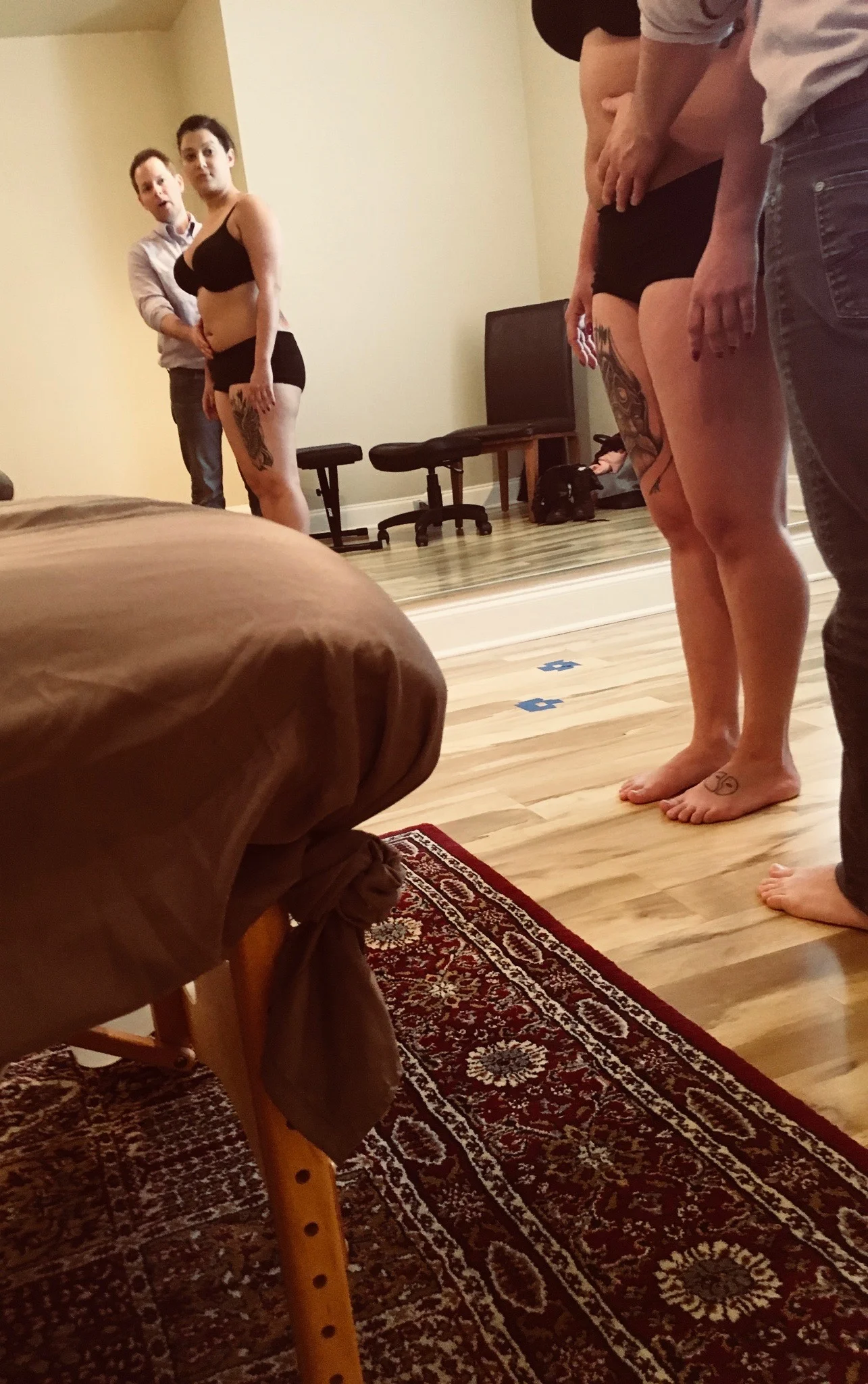How do Structural Integrators Organize Their Bodywork? (3 minute read)
Part of what makes structural integration different from other manual therapies is the way the work is organized. Whether they are Anatomy Trains SI practitioners, Rolfers, Core practitioners, Hellerworkers or the like, all structural integrators work with a "recipe." This recipe was an oral teaching from Ida Rolf. Apparently, by piecing together clues from copious notes, Ida's students collectively cobbled together a written form of the recipe. Some of these early students went on to form their own schools and over the years there has been very little collaborative energy between those schools. Interestingly, though, they all teach some form of Ida's recipe for structural integration. Most experienced structural integrators will tell you "I may not always follow the recipe exactly but I always know where I am in relation to it."
It is not our intention, in this short blog, to delineate that recipe. But for someone who is receiving structural integration it could be interesting to unpack the underlying principles of the structural integration recipe. The principles are very simple. When followed, good results come easy.
Layer in layer out
If you observe the self disciplined tradition of making your bed in the morning (and you aren't fortunate enough to have this task done for you every day), you understand the principle of layering. What would you do if you had reached the final step in your bed making process and realized you had trapped a pillow under the sheets? There is a big conspicuous bump right smack in the middle of your bed. Do you: a) leave it there because you refuse to sweat the small stuff; b) try to inch it out to the edge by pushing through all the layers; c) peel back every layer of your hard bed making work, retrieve the rogue pillow and then neatly pull each layer tight again? If you're diligent the "c" option is the real winner here; right?
Good SI practitioners go with option "c" too. They refuse to hunt for painful "bumps," label them "trigger points" and push through several layers of tissue just to eradicate them. We layer in, opening and softening superficial layers of fascia before addressing things at a deeper level. Once we talk to things at those deeper levels, we layer back out, draping the superficial layers back over the deeper smoothed and soothed tissue.
First, work in the saggital plane
Three major anatomical planes
In addition to organizing their work in layers SI practitioners usually work with your body's relationship to gravity in the saggital plane first. The saggital plane (also called the median plane) is an imaginary plane that dissects your body vertically, separating your right and left halves. One movement teacher labeled this the "wheel plane." When you move in the wheel plane you are moving parts of you forward or backward. Are you having a hard time imagining this? Try this: nod your head up and down. Now try shifting your head forward like you're sticking your chin out. These are movements that are happening predominantly in the saggital plane.
Sometimes parts of you will be out of alignment in the saggital plane. For example, your first thoracic vertebra may be shifted back in space relative to the vertebrae below it. Or your hips may be tilted toward the ground relative to the femurs they sit on. Good SI practitioners will usually address these patterns before tackling patterns in other planes. So, a shift forward will usually be handled before a bend or a rotation.
Second, work in the coronal plane
The coronal plane is an imaginary plane that divides your body into ventral (front) and dorsal (back) parts. It is also called the frontal plane. One movement teacher calls this plane the "doorway pane." If you move your arms up and down like you are making a snow angel or doing a jumping jack, you are predominantly moving in the coronal plane.
Sometimes parts of you will be out of alignment in the coronal plane. In other words, one part may be shifted sideways compared to another. Or something may tilt left or right; like a group of vertebra or your entire rib cage. Good SI practitioners will usually address these patterns after clearing up alignment issues in the saggital plane but before talking to unhelpful patterns in the transverse plane. So, an anterior tilt in your pelvis (pelvis tipped toward the ground in front) will usually be handled before a left tilt in your pelvis. A left tilt in your pelvis will usually be addressed before working with a rotation of your entire pelvis.
Third, work in the transverse plane
The transverse plane is an imaginary plane that divides your body into superior (top) and inferior (bottom) parts. Are you catching on? Rotate your head, shoulders and rib cage to turn and look behind you. Either direction you turn you are predominantly moving your rib cage, shoulders and head in the transverse plane. One movement teacher calls this the "tabletop" plane.
Sometimes parts of you will be out of alignment in the transverse plane. Your hips could be rotated to the left relative to your feet. This would mean your pubic bone would be pointing left. Skilled SI practitioners will address a pattern like this after handling problems in both the saggital and coronal plane.
A beautiful process
A beautiful thing happens when structural integrators work in this organized way. Bodies unwind. Patterns unfold and sometimes just disappear. For example, we may see a giant rotation in your pelvis. Your hips may be aiming left while your feet are traveling straight ahead. This may be putting tremendous strain on your low back since it's trying to determine which way you really want to go! This rotation may be the most obvious pattern we see. But if we have the self discipline to pump the therapeutic brakes and look at other patterns first, sometimes a rotation like this will vanish. So, to continue the example, if we work with your anterior tilt and then organize your pelvis so that it is not titled to the right, by the time we come back to look at your rotation, it may be gone!
This process happens within one session and also throughout a series of sessions.
What we hope you get from this explanation is an appreciation for the thought that goes into working with your body. This work is not massage therapy. It is not deep tissue massage. It is a carefully administered process. To SI practitioners it is a privilege to apply our simple recipe to a marvelous design and watch bodies that are struggling in gravity find a more comfortable home.



